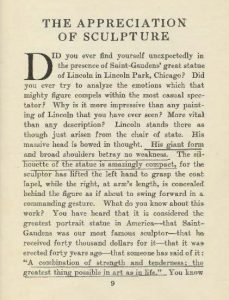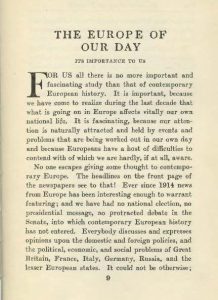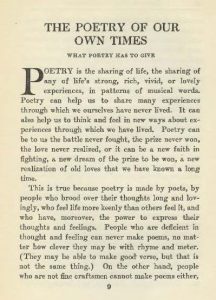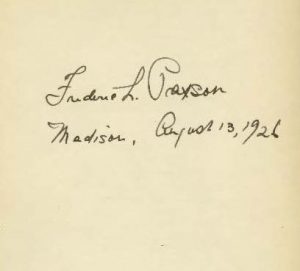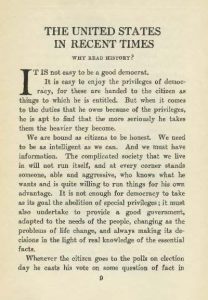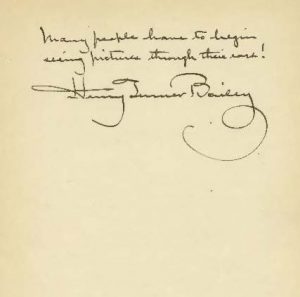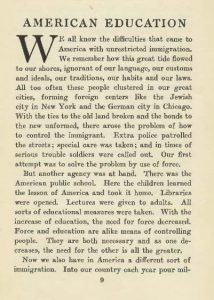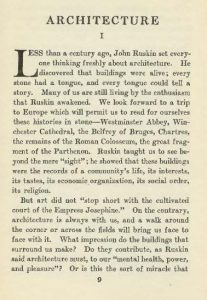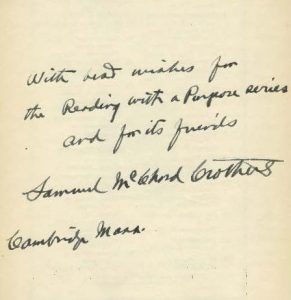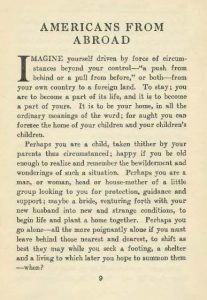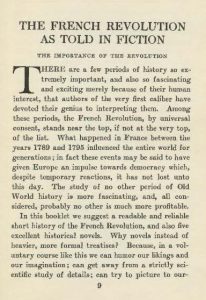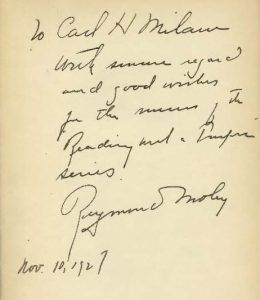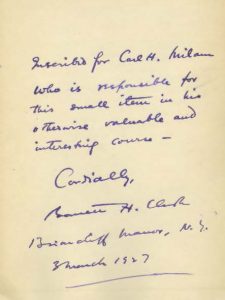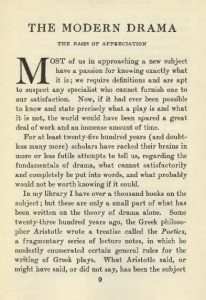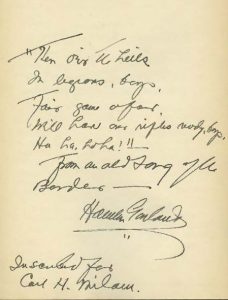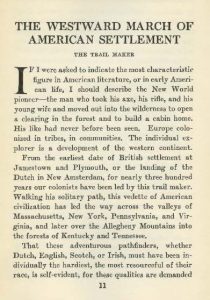From 1925 through 1933, known under the series title Reading with a Purpose, the American Library Association produced a series of resources to support general reading on a variety of topics, for adult readers who completed formal schooling. Each publication is rich in the perspectives of scholarly authorities of its time. Read on to learn more about Reading with a Purpose!
In Mental Hygiene, by U.S. psychiatrist Frankwood E. Williams, the author introduces readers to the field of mental health. In The Appreciation of Sculpture, by U.S. sculptor Lorado Taft, the author informs readers how the development of U.S. fine arts requires both artists and a public interested in the arts. While in The Europe of Our Day, by journalist and foreign correspondent Herbert Adams Gibbons, the author introduces contemporary political and social issues of Europe and where readers can begin to learn more recent European history.
Careful readers will notice that some books include marginalia. Unfortunately, at this time, we cannot definitively determine if these were notes written by Carl H. Milam or another writer.
In The Poetry of Our Own Times, by the U.S. poet Marguerite Wilkinson, the author introduces readers to contemporary poetry from U.S., British, and Irish writers. While in The United States in Recent Times, by U.S. historian Frederic Logan Paxson, the author introduces readers to recent U.S. history and 7 relevant books for more information.
Careful readers will notice that Marguerite Wilkinson’s inscription includes lines of poetry, shared not long before the author’s passing.
In Pleasure from Pictures, by artist and art educator Henry Turner Bailey, the author introduces readers to visual arts through writing, without the aid of image plates, while advocating for more artists to learn to write about art for teaching art to the general public. In American Education, by U.S. educator Dr. William F. Russell, introduces the development of U.S. education and its inseparability from U.S. immigration history and the diverse needs of U.S. residents. While in Architecture, by U.S. historian Lewis Mumford, the author introduces readers to aesthetic and utilitarian uses of architecture as well as the development of architectural criticism.
In The Modern Essay, by the U.S. essayist Samuel McChord Crothers, the author essays about modern essays and essayists, while suggesting essay collections for further reading. In Americans from Abroad, by U.S. journalist John Palmer Gavit, the author introduces readers to the experiences of immigrants to the U.S. and recommends books written by immigrants about their U.S. experiences. While in The French Revolution As Told in Fiction, by U.S. educator, historian, and writer William Stearns Davis, the author introduces the historical context for the French Revolution and he recommends novels as an approach for readers to understand the social changes.
In The Practice of Politics, by political economist Dr. Raymond Moley, the author introduces readers to the study of politics and he recommends books for further reading. While in Modern Drama, by U.S. theater critic, editor, historian, and translator, Barrett H. Clark, the author introduces the ambiguous definition of plays while recommending representative samples of different types of plays for readers to appreciate.
In The Westward March of American Settlement, by U.S. writer Hamlin Garland and with illustrations by his daughter Constance Hamlin Garland, the author introduces readers to the history European immigrants settling in North America and he includes recommendations for historical and fictional writings about the time period and the immigrants.
Careful readers will notice that Hamlin Garland’s inscription, like Marguerite Wilkinson’s inscription’s poetry, features carefully selected lyrics too. Also unique to this book, The Westward March of American Settlement appears to be the first installment to include images in the text, as seen in the figure surveying the landscape while atop a horse.
From the sciences to the arts and humanities, the Reading with a Purpose Series was published from 1925 through 1933, with the goal of providing recommended reading on a variety of topics to support the lifelong learning of adults. In this sample of some publications from the series, readers can see both the breadth of topics and the authors’ writing styles, as well as how special collections, like archives, can hold unique samples of ephemeral information like personal inscriptions rich with personal information about the writers and their readers.
Copies Available at Your ALA Archives
Physical copies of Reading with a Purpose are available for viewing at the ALA Archives. Please view the Record Series 29/3/10 database record entry, for more information.
Got Something to Donate to the Story So Far?
Many people have been involved in the long history of A.L.A. publications and bibliographic work. Do you have any information about Reading with a Purpose participants, collaborators, publications, or beneficiaries? Please contact us through social media. We and our readers would like to read about it.


